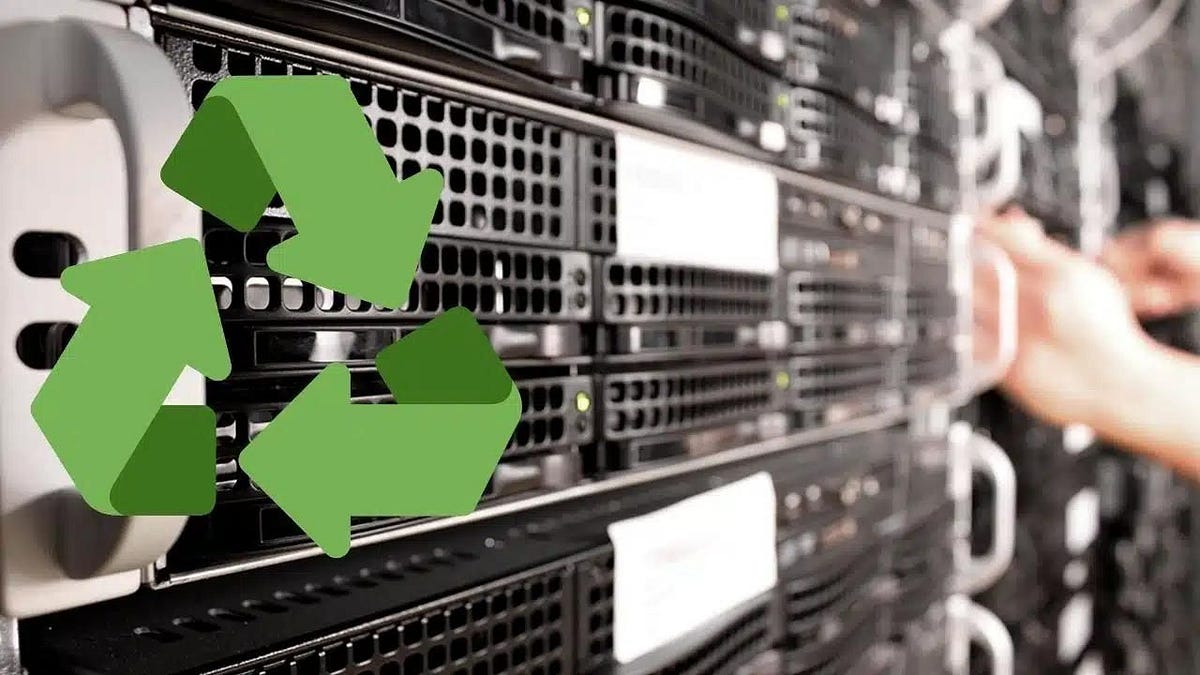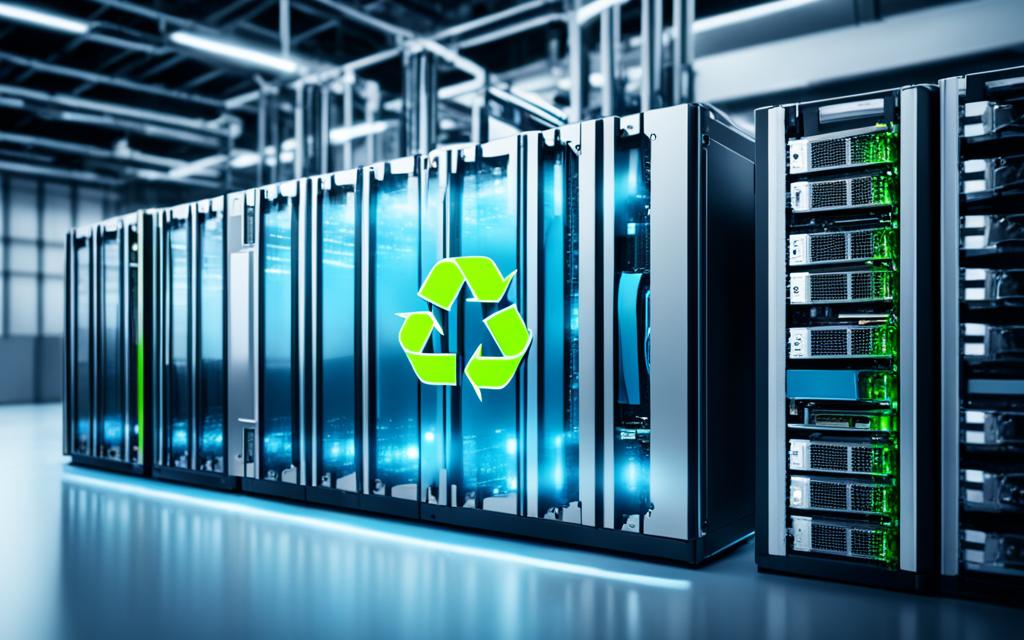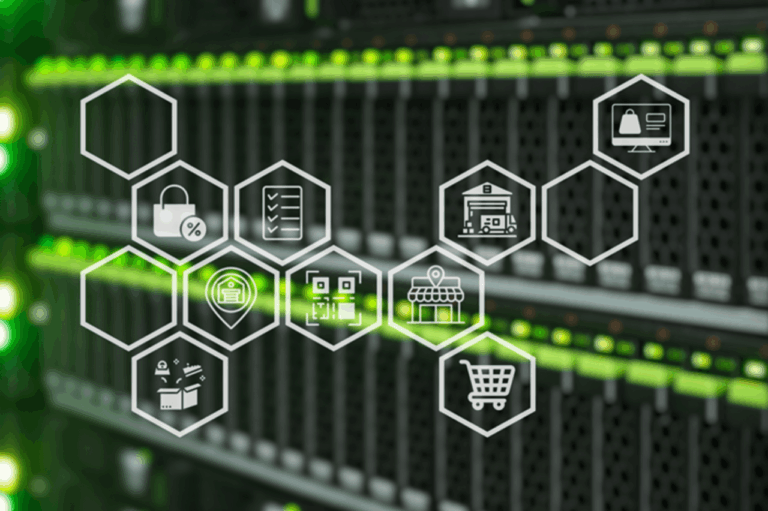The digital heartbeat of our modern world relies heavily on servers—the tireless machines that power everything from our social media feeds to complex scientific research. However, this immense computational power comes at a significant environmental cost, primarily in the form of energy consumption and carbon emissions. The good news? A new era of sustainable server solutions is emerging, radically transforming how these digital workhorses operate. These innovations are not merely incremental improvements; they represent a fundamental shift towards making our digital infrastructure environmentally responsible and economically viable for the long haul.
The Green Imperative

For many years, the relentless pursuit of speed and capacity dominated the server landscape. While performance remains crucial, the escalating climate crisis, coupled with rising energy costs and growing corporate social responsibility, has pushed sustainability to the forefront. Data centers, the vast physical homes of these servers, are among the world’s largest consumers of electricity. Their carbon footprint is significant, prompting an urgent need for more eco-friendly approaches.
Sustainable server solutions address this dual challenge. They aim to drastically reduce energy consumption, minimize waste, and harness renewable resources, ensuring that the relentless growth of data, AI, and cloud services doesn’t come at an unbearable cost to our planet. It’s about building a digital future that is both powerful and responsible.
Core Pillars of Sustainable Server Solutions
The movement towards sustainable servers is multifaceted, involving innovations across hardware, software, and operational practices. It’s a holistic approach designed to maximize efficiency and minimize environmental impact.
A. Energy Efficiency at the Core:
The most direct way to achieve sustainability is by making servers consume less power while delivering the same or better performance.
- High-Efficiency Components:
- Processors (CPUs, GPUs, ASICs): Chip manufacturers are constantly innovating to produce processors that offer higher performance per watt. This means they can perform more computations using less energy. Modern server processors feature advanced power management capabilities that dynamically adjust clock speeds and voltage based on workload, reducing consumption during idle or low-utilization periods. Specialized processors for AI (e.g., NVIDIA’s GPUs, Google’s TPUs) are also being designed with energy efficiency in mind for their specific workloads.
- Power Supplies (PSUs): Server power supplies are rated by their efficiency in converting AC power from the grid to the DC power used by internal components. Higher ratings (e.g., 80 PLUS Titanium) indicate less energy is lost as heat during conversion. Next-generation PSUs are pushing these boundaries.
- Solid-State Drives (SSDs) and NVMe: Replacing traditional spinning hard disk drives (HDDs) with SSDs significantly reduces power consumption for storage, as SSDs have no moving parts. NVMe (Non-Volatile Memory Express) SSDs offer even greater performance and lower power usage per operation.
- Optimized Power Distribution:
- Higher Voltage DC Distribution: Instead of multiple AC-DC conversions, distributing power within the data center using higher voltage DC can reduce energy losses. This streamlines the power chain from the grid to the server.
- Smart Power Distribution Units (PDUs): Intelligent PDUs monitor power consumption at the rack and individual server level, providing granular data that helps identify inefficiencies. They can also offer remote power control to manage devices more effectively.
- Dynamic Power Management (DPM) Software:
- Workload Optimization: Advanced software platforms use machine learning to dynamically allocate workloads to the most energy-efficient servers. They can automatically power down or put into low-power states servers that are underutilized, or consolidate workloads onto fewer machines to maximize efficiency.
- Virtualization and Containerization: These technologies allow multiple virtual machines (VMs) or containers to run on a single physical server, dramatically increasing server utilization rates. By reducing the number of physical servers needed to run a given workload, they inherently save significant power and cooling energy.
B. Innovative Cooling Methods:
Cooling systems are often the second-largest energy consumer in data centers. Sustainable solutions are revolutionizing how servers shed heat.
- Liquid Cooling Technologies:
- Direct-to-Chip Liquid Cooling: This method delivers coolant directly to the hottest components like CPUs and GPUs via cold plates. Liquid is a far more efficient heat conductor than air, allowing for higher power densities within racks and significantly reducing the energy needed for fans and chillers.
- Immersion Cooling: Servers are fully submerged in a non-conductive dielectric fluid that directly absorbs heat. This offers unparalleled cooling efficiency, often eliminating the need for traditional air conditioning entirely. It can also lead to quieter operations and reduced dust accumulation.
- Rear Door Heat Exchangers: These units attach to the back of server racks and use chilled water to capture exhaust heat directly from servers, preventing it from mixing with the ambient room air.
- Free Cooling and Evaporative Cooling:
- Air-Side Economizers: In regions with cool climates, these systems draw in cool outside air directly to cool the data center, drastically reducing the need for mechanical refrigeration during certain times of the year.
- Water-Side Economizers: These systems use cool water from external sources (e.g., rivers, lakes, dedicated cooling towers) in a heat exchange process to cool the data center without running chillers.
- Evaporative Cooling: Also known as “swamp coolers,” these systems cool air by evaporating water, a highly energy-efficient process, especially effective in dry climates. They consume significantly less energy than compressor-based refrigeration.
- Intelligent Cooling Control Systems (AIOps):
- AI-Driven Optimization: Artificial intelligence and machine learning algorithms continuously monitor hundreds of environmental sensors (temperature, humidity, airflow) and IT load data points across the data center. They use this information to predict cooling needs and dynamically adjust cooling systems (e.g., fan speeds, chiller setpoints, pump rates) in real-time, preventing overcooling and maximizing efficiency.
C. Renewable Energy Integration:
Powering servers with clean, renewable energy sources is a cornerstone of true sustainability.
- Direct Sourcing and Power Purchase Agreements (PPAs): Leading cloud providers and enterprises are increasingly entering into direct agreements with renewable energy generators (solar farms, wind farms) to power their data centers. This ensures that the energy consumed is generated from clean sources.
- On-Site Renewable Generation: Some data centers are incorporating on-site solar panels or other renewable energy generators to supplement their power needs, directly reducing reliance on grid power that may be fossil-fuel dominant.
- Smart Grid Integration: Future data centers will become more active participants in the smart grid, dynamically drawing power when renewable energy is abundant and even feeding excess power back to the grid, optimizing overall energy utilization.
D. Circular Economy Principles:
Beyond just energy, sustainable server solutions embrace the principles of a circular economy: reduce, reuse, recycle.
- Extended Hardware Lifespans:
- Better Cooling and Maintenance: More effective cooling systems and proactive maintenance practices prolong the operational life of servers and components, reducing the frequency of hardware replacement.
- Software Optimization: Running modern, efficient software on older, but still functional, hardware can extend its useful life, delaying the need for new equipment.
- Refurbishment and Reuse:
- Component Reuse: Instead of discarding entire servers, functional components (RAM, CPUs, power supplies) can be salvaged and reused in other systems or for spare parts.
- Secondary Markets: Robust secondary markets for used IT equipment allow servers to be redeployed by other organizations, extending their value chain.
- Responsible End-of-Life Management:
- Electronics Recycling (E-Waste): Ensuring that servers and their components are responsibly recycled at the end of their useful life prevents hazardous materials from entering landfills and allows valuable materials to be recovered and reused. This adheres to WEEE (Waste Electrical and Electronic Equipment) directives where applicable.
- Data Destruction: Secure and environmentally sound data destruction methods are critical to protect sensitive information while responsibly recycling hardware.
Measuring Sustainability

While Power Usage Effectiveness (PUE) has been the gold standard for energy efficiency, a truly sustainable server strategy requires broader metrics.
A. Power Usage Effectiveness (PUE):
- Definition: PUE = Total Facility Energy / IT Equipment Energy. A PUE of 1.0 is ideal, meaning all energy goes directly to IT equipment.
- Importance: Remains a critical metric for measuring the energy overhead of cooling, power distribution, and other infrastructure. Leading data centers are achieving PUEs as low as 1.05 to 1.2.
B. Carbon Usage Effectiveness (CUE):
- Definition: CUE = Total Carbon Emissions from Data Center Operations / IT Equipment Energy.
- Importance: Directly links energy consumption to its environmental impact, measuring the actual carbon footprint, especially important as data centers aim for carbon neutrality or negativity.
C. Water Usage Effectiveness (WUE):
- Definition: WUE = Liters of Water Used for Data Center Operations / IT Equipment Energy.
- Importance: Crucial for data centers employing evaporative or certain liquid cooling methods that consume water. Measures the water footprint of cooling systems.
D. Energy Reuse Effectiveness (ERE):
- Definition: ERE = Total Energy Reused / IT Equipment Energy.
- Importance: Quantifies how much of the waste heat from the data center is captured and repurposed (e.g., for heating buildings, powering local greenhouses, or even generating electricity), moving towards a circular energy model.
Real-World Impact and Applications
The emergence of sustainable server solutions is not just a theoretical concept; it’s driving tangible changes across various sectors.
A. Hyperscale Cloud Providers:
Leading cloud companies (Google, Amazon, Microsoft, IBM) are at the forefront of sustainable server innovation. Their massive scale means even small efficiency gains translate into enormous savings and carbon reductions. They invest heavily in:
- Custom Hardware: Designing their own energy-efficient chips and server designs.
- Advanced Cooling: Pioneering liquid and free cooling techniques.
- Renewable Energy Procurement: Signing huge Power Purchase Agreements to power their global data centers entirely with renewables.
B. Enterprise Data Centers:
Companies with their own on-premises data centers are adopting sustainable practices to reduce operational costs and meet corporate sustainability goals. This includes:
- Modernizing Infrastructure: Replacing older, inefficient servers with newer, more energy-efficient models.
- Implementing Hot/Cold Aisle Containment: Optimizing airflow within their existing facilities.
- Virtualization and Consolidation: Increasing server utilization to reduce the physical footprint and energy consumption.
C. Edge Computing Deployments:
As computing moves closer to the data source (edge computing), sustainable server solutions are critical for managing power in remote or resource-constrained environments.
- Low-Power Edge Devices: Designing highly efficient micro-servers and embedded systems for edge locations.
- Natural Cooling: Leveraging ambient conditions for passive or free cooling in edge deployments.
- Renewable Microgrids: Powering remote edge sites with localized solar or wind solutions.
D. High-Performance Computing (HPC) and AI Research:
The energy demands of massive HPC clusters and AI training models are enormous. Sustainable server solutions are enabling these fields to grow responsibly:
- Liquid Cooling for Supercomputers: Liquid cooling is essential for dense HPC and AI server racks to manage extreme heat loads efficiently.
- Power-Efficient Accelerators: Designing AI accelerators that deliver maximum performance per watt.
- Optimized Workload Scheduling: Intelligent software scheduling to run compute-intensive jobs during periods of peak renewable energy availability.
The Future of Sustainable Servers
The quest for greener, more efficient digital infrastructure is far from over. Several exciting trends are on the horizon.
A. Advanced Materials and Manufacturing:
- Sustainable Components: Research into using more environmentally friendly materials in server components and manufacturing processes that reduce waste and harmful byproducts.
- Modular and Disassemblable Designs: Designing servers for easier disassembly and recycling, facilitating the recovery of valuable materials at end-of-life.
B. AI for Self-Optimizing Data Centers:
- Autonomous Operations: AI systems will become even more sophisticated, enabling data centers to largely manage and optimize themselves, dynamically adjusting power, cooling, and workload placement for maximum efficiency without human intervention.
- Predictive Maintenance: AI will predict hardware failures and maintenance needs with even greater accuracy, ensuring equipment runs optimally and prolonging its lifespan, reducing e-waste.
C. Direct Heat Reuse and Circular Economy Evolution:
- District Heating Integration: More data centers will integrate with local district heating systems, providing excess heat to warm homes, offices, or greenhouses in nearby communities.
- Waste-to-Energy Concepts: Exploring more radical ideas like converting server waste heat directly into other forms of energy or even using it for aquaculture
D. Next-Generation Battery Storage and Grid Integration:
- Advanced Battery Technologies: Beyond lithium-ion, new battery chemistries and storage solutions will make it easier for data centers to store renewable energy and operate more independently from fluctuating grid conditions.
- Data Center as a Grid Asset: Data centers could evolve to become significant assets for the power grid, providing demand response services, absorbing excess renewable energy, and contributing to grid stability.
E. Carbon Capture Technologies:
While nascent for data centers, future innovations might explore direct air capture or other carbon capture technologies integrated within data center operations to achieve net-negative emissions.
Challenges on the Path to Full Sustainability
Despite the incredible progress, achieving widespread sustainable server solutions faces significant hurdles.
A. Initial Investment Costs:
Many cutting-edge sustainable technologies (e.g., advanced liquid cooling, on-site renewables) require substantial upfront capital investment, which can be a barrier for smaller organizations.
B. Legacy Infrastructure:
Upgrading and retrofitting existing, older data centers to meet modern sustainability standards can be technically complex and economically challenging.
C. Supply Chain Sustainability:
Ensuring the entire server supply chain, from raw material extraction to component manufacturing and transportation, adheres to sustainable and ethical practices is a complex global challenge.
D. Skill Gap:
Operating and maintaining highly efficient, AI-driven data centers requires specialized skills in areas like thermal engineering, data science, renewable energy management, and advanced IT operations.
E. Standardization and Regulation:
While progress is being made, the lack of universally adopted standards and consistent regulations for data center sustainability across all regions can hinder widespread adoption and fair comparison.
F. Geographic Constraints:
Some highly efficient cooling methods (like free cooling) are highly dependent on favorable climate conditions, limiting their applicability in all regions.
Conclusion
The emergence of sustainable server solutions marks a pivotal moment in our digital evolution. It’s a testament to the fact that technological progress does not have to come at the expense of our planet. By embracing energy-efficient hardware, pioneering cooling innovations, integrating renewable energy, and adopting circular economy principles, the digital infrastructure that underpins our world is becoming fundamentally greener and more resilient. The journey towards a fully sustainable server ecosystem is complex and ongoing, but the trajectory is clear: the future of computing will be defined not just by raw power, but by purpose – powering progress responsibly, ensuring that as our digital universe expands, its foundation remains robust, economically viable, and, critically, environmentally sound. The planet, and our future, depend on it.



